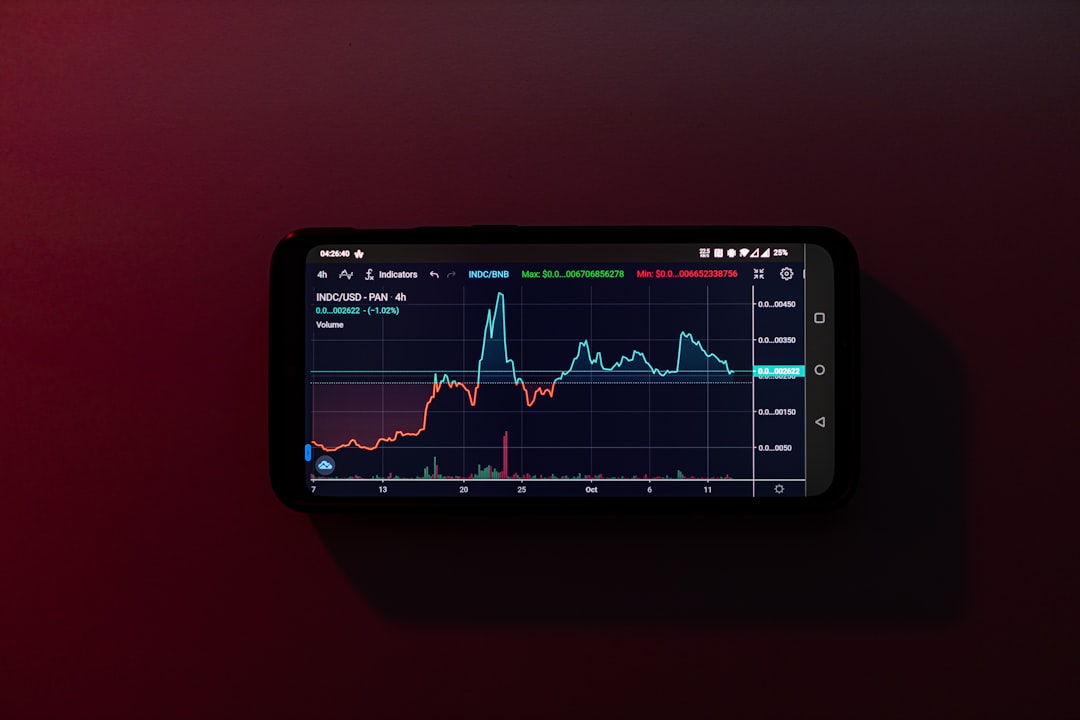Table of Contents
- Introduction
- Assessing the Complexity of Your WordPress Project: From Page Count to Functionality Overload
- The Influence of AI-powered Tools on Web Design Pricing: Are Plugins Your New Best Friend?
- Time is Money: Estimating Hours for Design and Implementation Because You’re Not an AI-Powered Bot (Yet)
- Breaking Down Content Creation Costs: Is Automated Content from AI Generators Worth the Hype?
- Nailing Down the Price of Ongoing Maintenance and Support Without Losing Your Soul
- How to Factor in Your Expertise and Experience (And Why You Shouldn’t Undersell an AI Copywriter)
- The Art of Negotiation: Crafting Proposals That Make Clients Realize You’re a Web Design Wizard
- Monitoring Market Trends: Keep an Eye on AI Writing Tools and Content Automation to Stay Competitive
- Conclusion
- Frequently Asked Questions
Introduction
Setting the right price for your WordPress website design services can feel like a tightrope walk—get it right, and you’ll have clients lining up at your door; get it wrong, and you risk scaring them away or undervaluing your hard work.
Whether you’re a seasoned designer or just starting out, understanding the nuances of pricing is essential in an ever-competitive digital market. How do you balance your time, creativity, and expertise against client expectations and budget constraints?
In this article, we’ll delve into the art and science of setting your prices, from evaluating your skills and expertise to understanding your client’s needs and industry standards.
With insights and strategies tailored specifically for WordPress designers, you’ll be equipped with the knowledge to confidently set prices that reflect both your value and market demand. Ready to master the pricing game? Dive in, and let’s discover how to ensure you’re well-compensated for your craft!
Assessing the Complexity of Your WordPress Project: From Page Count to Functionality Overload
Alright, let’s dive into assessing the complexity of your WordPress project, shall we? Just like creating a masterpiece painting, designing a website involves balancing color, texture, and depth—only here, it’s page count, functionality, and plugins. Picture your site as a sprawling mansion; each room, or page, adds to its grandeur. Planning just a single page? Easy peasy! But if you’re aiming for a digital palace, hold your horses, because complexity skyrockets.
Start by jotting down how many pages you need. Not just placeholders, mind you, but genuine, working pages. Next, think about the functionality—because a site should do more than just sit pretty. Do clients need to schedule appointments, or interact with it like a new-age mirror greeting guests with daily whims? The more it has to do, the trickier it gets.
As you wander through these decisions, remember to lean on plugins, those little magic boxes of wonderment. They’re like the secret ingredients in grandma’s famous pie, making everything just right. But beware, too many can clutter your project’s soul. So, assess wisely and sprinkle them with care, ensuring the site runs smoother than a cat on a sunny window ledge. In the end, it’s all about blending art and function to create something that not only looks dazzling but works like a charm.
The Influence of AI-powered Tools on Web Design Pricing: Are Plugins Your New Best Friend?
These days, waving a magic wand in web design seems almost plausible, thanks to AI-powered tools. With every click and clack of the keyboard, designers find that plugins are like trusty sidekicks, ready to leap in and save the day. Are they your new best friends? Well, not so fast! While they breeze through the tedious tasks, these digital darlings don’t necessarily come free.
Picture this: a grizzled designer reminiscing about the old days of painstaking coding, when every line felt like scaling a skyscraper. Now, with a few AI plugins, that once-daunting tower is more of a walk in the park, flowers blooming at every turn. This efficiency, though, shapes how you price your services. Lower costs on your end might mean competitive pricing, but generous use of plugins could inflate that final bill if you’re not careful.
Moreover, there’s the irony of relying too heavily on these tools. Clients adore bespoke designs, yet if plugins craft cookie-cutter sites, your unique edge might lose its luster. It’s a tightrope walk, balancing the benefits of AI with the personal touch patrons prize. So, are plugins your new best buddies? Maybe, but remember, even the best friends sometimes need a little guidance.
Time is Money: Estimating Hours for Design and Implementation Because You’re Not an AI-Powered Bot (Yet)
Time is money, or so the saying goes. When designing a WordPress website, you might find yourself racing against the clock, much like a hare on a hasty jaunt, except without carrots at the finish line. Estimating how much to charge involves a delicate dance of weaving time with task. You’re not an AI-powered bot—at least not yet—so it’s crucial to map out your hours before setting the price tag.
Imagine this: You’re lounging in a coffee shop, latte in hand, pondering the labyrinth that is WordPress design. It’s no stroll in the park; it’s more like navigating a jungle gym, where every plugin and widget is a riddle waiting to be solved. Here’s a little secret—foreshadowing alert—it’s gonna take longer than you think! Maybe you’ve heard the one about the designer who thought they’d whip up a site over a weekend? Spoiler: They were knee-deep in CSS by Sunday brunch.
So, while you’re sketching out your plan, picture each task like an old friend dropping by for a chat. Some linger, others flit away like whispers in the wind. Remember, it’s not just about slogging through code; it’s about wrapping your head around your client’s vision and making it sing like a canary on a summer day.
Breaking Down Content Creation Costs: Is Automated Content from AI Generators Worth the Hype?
Picture this: you’re sitting with your morning coffee, contemplating the cost of creating brilliant content. Suddenly, AI-generated content barges in like an uninvited guest at a party, promising to deliver word wizardry at a fraction of the price of traditional routes. But is it worth jumping on this digital bandwagon?
For small business owners and budding bloggers, the allure of AI-generated content shines brightly, like a lighthouse on a stormy night. It dangles the possibility of cutting costs while maintaining a steady flow of fresh posts. However, beneath this allure lies the irony. While AI can churn out content faster than you can say “algorithm,” the human touch often gets lost in translation – literally.
Imagine a world where every blog is a cookie-cutter clone, void of personality and zest. Automation might save you bucks upfront, but losing that unique voice could cost you dearly in the long run. On the other hand, when used wisely, these tools can complement human creativity, working in harmony like a seasoned jazz band. As with many modern marvels, it’s all about balance. Embrace AI, but remember, there’s nothing quite like content crafted from the heart, with passion and purpose.
Nailing Down the Price of Ongoing Maintenance and Support Without Losing Your Soul
Ah, the million-dollar question: how much should you really charge for ongoing maintenance and support when designing a WordPress website? It’s a classic case of the balancing act, juggling the needs of both parties without toppling over. You wouldn’t want to sell yourself short, yet you desire to keep the peace and maintain strong relations. It’s akin to a seesaw where fairness and frustration sit on either end, and your goal is to keep them level.
Now, here’s a story to paint the picture. Imagine Jane, a seasoned web designer, who’s just wrapped up a dream project. As she looks at the beautifully coded lines, she realizes the real work might just be beginning. That’s the irony of it, isn’t it? As updates roll in like waves on a beach, maintenance becomes the name of the game. But Jane, she’s clever—she doesn’t just wing it. She sets a transparent fee structure based on the client’s specific needs and anticipated future adjustments. So, as predictable as a sunset, Jane ensures there’s daylight ahead for both her business and her client relationships.
How to Factor in Your Expertise and Experience (And Why You Shouldn’t Undersell an AI Copywriter)
Finding the golden ticket of setting the perfect price for designing a WordPress website can be like trying to hit a moving target. For starters, your experience and expertise should be the North Star guiding your pricing strategy. Picture this: a master chef, who started as a line cook, knowing every spice and herb by heart, charges for the years of culinary wisdom gathered over time. That’s you, with WordPress as your bustling kitchen! Don’t sell yourself short. Underselling not only does a disservice to your talents but also sends a deflated signal to potential clients.
Now, why shouldn’t you undersell AI copywriters, you ask? Well, it’s like this—picture an ever-ready co-pilot that knows the course in and out. Sure, it doesn’t replace the human touch (like cooking without salt), but it aids in streamlining the chaos. Charging peanuts for your hard-earned skills indirectly trains clients to expect world-class websites for a pittance. So, let your experience shine through, charge what you’re truly worth, and keep the scales balanced in this grand marketplace tango. Let’s face it, it’s not just about building a site—it’s about crafting a captivating digital narrative. And for that, your skills are truly priceless.
The Art of Negotiation: Crafting Proposals That Make Clients Realize You’re a Web Design Wizard
Diving into the art of negotiation is like stepping into a dance, where every move counts and rhythm reigns supreme. Picture this: you’re at the helm of crafting a proposal for a brand-new WordPress website. The key? Mesmerize your clients by painting vivid pictures of what awaits. You know, like giving them a glimpse of the stunning sunrise before they’ve ever felt the warmth of its rays. It’s all about understanding your clients, like a sailor reading the winds, anticipating what they’ll find valuable and marrying it to your skills.
Now, story time! Remember that old tale of the craftsman who didn’t just make tables, but wove tales of family dinners, laughter echoing off the surfaces? That’s you, crafting stories of web wonderlands. Sprinkle in a dash of irony, letting them know you know they could go elsewhere, but you’re the North Star in the vast web-design galaxy.
And, oh, let’s not forget the musical notes in your proposals, those tempting transitions that make clients feel like they’re dancing to the sweet melody of ‘new beginnings.’ With each enticing detail, like the brush strokes of an artist, they realize your pricing isn’t just a number—it’s an investment in magic.
Monitoring Market Trends: Keep an Eye on AI Writing Tools and Content Automation to Stay Competitive
In the ever-evolving digital landscape, keeping pace with the swift currents of change can feel like trying to catch the wind. One minute, you’re on the crest of the wave, riding high; the next, you’re scrambling to stay afloat. For web designers pricing their services, monitoring market trends isn’t just advisable—it’s essential. Take, for instance, the rise of AI writing tools. Once upon a time, they were mere whispers on the horizon, but now, they’re making waves, transforming the way content is created, consumed, and valued. These AI marvels don’t just plop out words; they craft narratives, spin tales, and sometimes even crack jokes. It’s a bit like having Shakespeare or Hemingway as your silent partner, minus the quill and dramatic flair.
As budding web designers or seasoned pros, staying competitive means embracing these tools, not fearing them. Incorporating AI into your toolkit could be the difference between being a digital dinosaur and a tech trailblazer. So, while you’re sipping your morning coffee, scrolling through the latest tech news, remember: keeping an eye on these trends is like having a compass in a world where the only constant is change. Don’t just follow the yellow brick road—redefine it.
Conclusion
As the landscape of WordPress website design continues to evolve, setting the right price for your creativity and expertise is more crucial than ever. From assessing project complexity and factoring in AI tools to estimating design hours and understanding market trends, every element plays a pivotal role in crafting competitive and value-driven pricing strategies. The emergence of AI-powered tools and plugins, like the revolutionary WPHorde, is transforming the way web designers approach their projects. By harnessing these innovations, designers can not only enhance their efficiency but also maintain a competitive edge in an ever-changing market. Those who fail to embrace such tools risk being left behind as digital dinosaurs.
Your call to action is clear: incorporate cutting-edge tools like WPHorde into your design arsenal and keep pace in this dynamic industry. Elevate your design game, optimize your workflows, and deliver standout, bespoke websites by unlocking the power of modern technology. Take action today and ensure you’re not just following future trends—you’re setting them.














